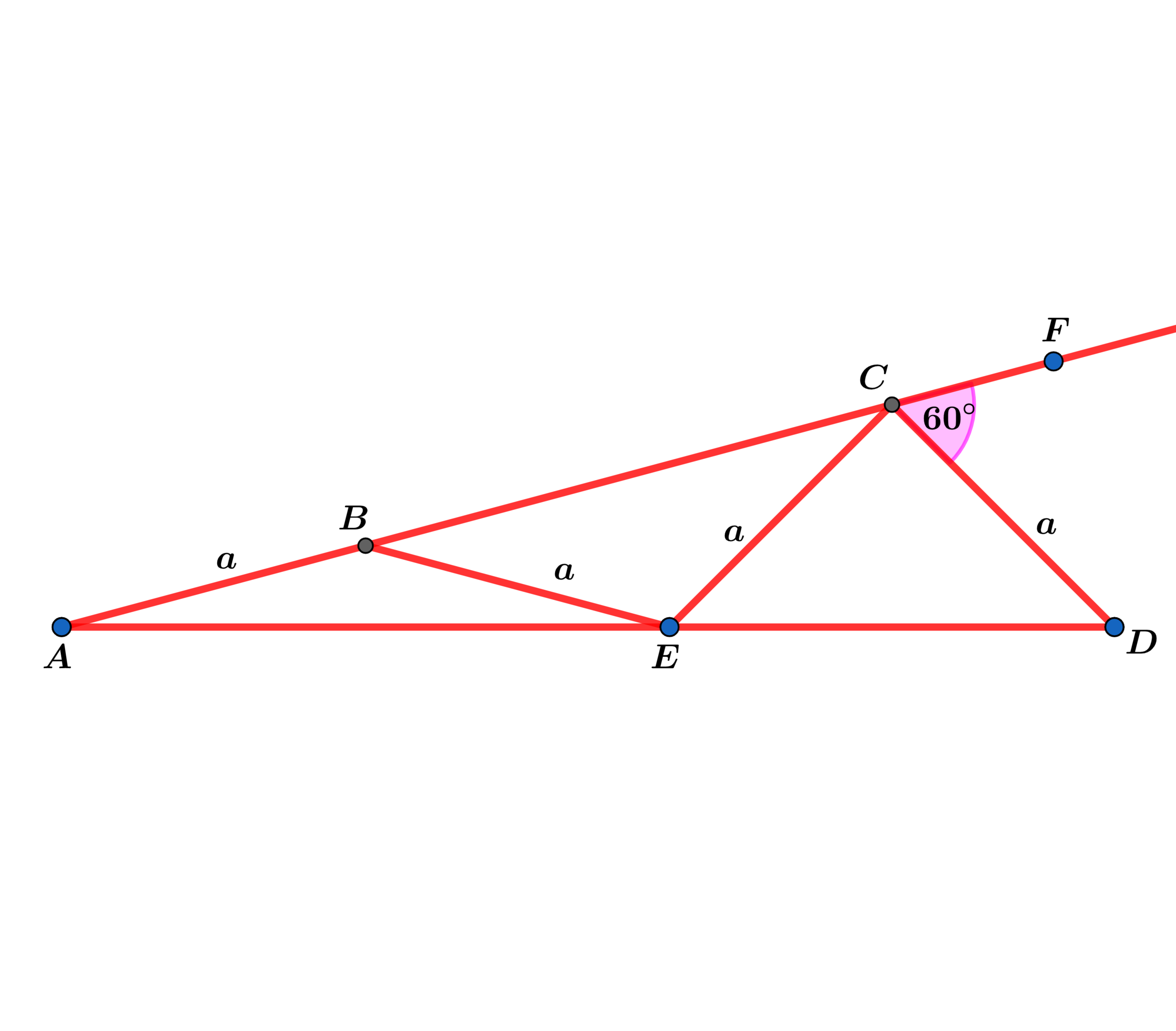Isosceles Triangles

In the diagram above points and are collinear, point lies on
and point lies on and and
Let be the perimeter of and be the area of .
If the value of for which can be expressed as
, where and are coprime positive integers, find .
The answer is 13.
This section requires Javascript.
You are seeing this because something didn't load right. We suggest you, (a) try
refreshing the page, (b) enabling javascript if it is disabled on your browser and,
finally, (c)
loading the
non-javascript version of this page
. We're sorry about the hassle.
First we need to obtain θ to get the measure of the desired angles to obtain the area and perimeter.
m ∠ E C D = 1 8 0 ∘ − 2 θ , m ∠ E C B = 2 θ − 6 0 ∘ , m ∠ B E C = 3 0 0 ∘ − 4 θ
m ∠ A B E = 2 4 0 ∘ − 2 θ , m ∠ A E B = 3 θ − 1 2 0 ∘ and m ∠ A = 6 0 ∘ − θ ⟹
6 0 ∘ − θ = 3 θ − 1 2 0 ∘ ⟹ θ = 4 5 ∘ ⟹ m ∠ E C D = 9 0 ∘
and m ∠ A = m ∠ A E B = 1 5 ∘ ⟹ m ∠ A B E = 1 5 0 ∘
△ E C D is a ( 4 5 ∘ , 4 5 ∘ , 9 0 ∘ ) triangle ⟹ E D = 2 a
and in △ A B E :
A E 2 = 2 a 2 ( 1 − cos ( 1 5 0 ∘ ) = 4 a 2 sin 2 ( 7 5 ∘ ) ⟹ A E = 2 a sin ( 7 5 ∘ ) = 2 3 + 1 a
⟹ A D = A E + E D = 2 3 + 3 a and h = a sin ( 4 5 ∘ ) = 2 a ⟹
A △ A C D = 4 3 + 3 a 2
For P △ E B C :
B C 2 = 2 a 2 ( 1 − cos ( 1 2 0 ∘ ) = 4 a 2 sin 2 ( 6 0 ∘ ) ⟹ B C = 2 a sin ( 6 0 ∘ ) = 3 a
and B E = E C = a ⟹ P △ E B C = ( 3 + 2 ) a
A △ A C D + P △ E B C = 1 ⟹ ( 3 + 3 ) a 2 + 4 ( 3 + 2 ) a − 4 = 0 ⟹
dropping the negative root we have:
a = 3 + 3 2 ( − ( 3 + 2 ) + 5 ( 3 + 2 ) ) = 6 2 ( − 3 − ( 3 ) + 3 0 ( 2 − 3 ) ( 2 + 3 ) )
= 3 3 0 − 3 − 3 = 3 3 ∗ 1 0 − 3 − 3 = α α ∗ β − α − α ⟹
α + β = 1 3 .